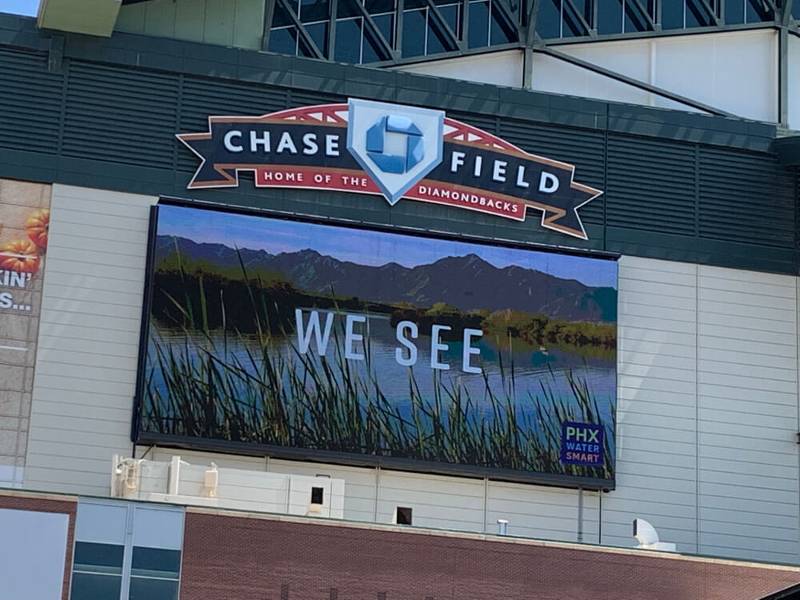The Arizona Diamondbacks were established in 1998 as an expansion team in Major League Baseball (MLB), joining the National League’s West Division. The team was the first MLB franchise in the state of Arizona, bringing professional baseball to the Grand Canyon State. The Diamondbacks have since become a cornerstone of Arizona’s sports scene, developing a strong fan base and contributing to the state’s baseball culture.
The Impact of Baseball in Arizona
Baseball has long been a popular sport in Arizona, with a rich history of youth leagues, college teams, and the Cactus League for spring training. The arrival of the Diamondbacks helped elevate the sport to new heights within the state, as they inspired a new generation of baseball fans and athletes. As we delve into the history of the Arizona Diamondbacks, we’ll explore the memorable moments, key players, and the team’s influence on baseball in Arizona.
History of the Arizona Diamondbacks
The Team’s Inception: 1995-1997
The journey of the Arizona Diamondbacks began in 1995 when MLB announced that Phoenix, Arizona, would be awarded an expansion team. This decision came as a result of the city’s rapidly growing population and its enthusiastic support for baseball. In the following years, the organization laid the groundwork for its inaugural season, constructing Chase Field (originally known as Bank One Ballpark) and assembling the roster through drafts and trades.
Early Success: 1998-2002
The Arizona Diamondbacks played their first MLB game on March 31, 1998, against the Colorado Rockies. Led by manager Buck Showalter, the team enjoyed relative success in its first few seasons, quickly becoming a competitive force in the National League. The pinnacle of this early success came in 2001 when the Diamondbacks won the World Series in just their fourth season, defeating the New York Yankees in a thrilling seven-game series. This victory solidified the Diamondbacks’ reputation as a formidable team in MLB.
Rebuilding Years: 2003-2006
Following their World Series victory, the Diamondbacks entered a period of rebuilding. The team faced several challenges, such as an aging roster, financial constraints, and a decline in performance. During these years, the organization underwent significant changes, including the hiring of a new general manager, Josh Byrnes, in 2005. The team’s focus shifted towards developing a strong farm system, scouting and drafting talented prospects, and making strategic trades to build a competitive roster for the future.
Return to Prominence: 2007-2011
The Diamondbacks’ rebuilding efforts began to pay off in 2007, as they clinched the National League West Division title with a league-best record of 90-72. With a young core of talented players, including Justin Upton, Mark Reynolds, and Chris Young, the team returned to the playoffs. Although they were eliminated in the National League Championship Series, this success marked the beginning of a new competitive era for the Diamondbacks. Over the next few seasons, the team continued to develop its young talent and remained a competitive force in the National League West, with another division title in 2011.
Modern Era: 2012-Present
Entering the modern era, the Diamondbacks continued to navigate the challenges of building a winning team. Key players like Paul Goldschmidt, A.J. Pollock, and Zack Greinke helped maintain the team’s competitiveness. In 2017, the Diamondbacks returned to the postseason as a Wild Card team, ultimately falling to the Los Angeles Dodgers in the National League Division Series. The organization has continued to prioritize player development, scouting, and analytics in an effort to stay competitive in the ever-evolving landscape of Major League Baseball.
Memorable Moments
The 2001 World Series Championship
The 2001 World Series remains the most iconic moment in the Arizona Diamondbacks history. Facing the heavily favored New York Yankees, the Diamondbacks demonstrated their resilience throughout the series. In a dramatic Game 7, the team clinched the championship when Luis Gonzalez hit a game-winning single in the bottom of the ninth inning. This moment not only solidified the Diamondbacks as World Series Champions but also marked one of the most memorable moments in baseball history.
Randy Johnson’s Perfect Game
On May 18, 2004, Randy Johnson, one of the most dominant pitchers in MLB history, etched his name in the record books by throwing a perfect game against the Atlanta Braves. At the age of 40, Johnson became the oldest pitcher to achieve this rare feat, retiring all 27 batters he faced without allowing a hit, walk, or error. This remarkable accomplishment further solidified Johnson’s status as a legendary Diamondback and a key figure in the team’s history.
The 20-Inning Game
On April 17, 2010, the Diamondbacks took part in a historic 20-inning game against the St. Louis Cardinals. The contest, which lasted over six and a half hours, became the longest game in Chase Field history. Though the Diamondbacks ultimately lost the game, the thrilling battle was an unforgettable display of endurance, strategy, and skill that showcased the spirit of competition and the love of the game.
Record-Breaking Seasons and Milestones
Throughout their history, the Diamondbacks have had several players achieve remarkable milestones and break records. From Randy Johnson’s 300th career win and 4,000th strikeout to Paul Goldschmidt’s Silver Slugger Awards and All-Star appearances, these individual accomplishments have contributed to the team’s overall legacy and helped to shape the rich history of the Arizona Diamondbacks.
Key Players and Figures
Randy Johnson: The Big Unit
Randy Johnson, affectionately known as “The Big Unit,” is undoubtedly one of the most iconic players in Diamondbacks history. The towering left-handed pitcher, known for his intimidating presence and blazing fastball, spent eight seasons with the team. Johnson played a crucial role in the 2001 World Series victory and earned four consecutive Cy Young Awards while with the Diamondbacks, solidifying his status as one of the greatest pitchers in MLB history.
Luis Gonzalez: The Clutch Performer
Luis Gonzalez, a five-time All-Star, is best remembered for his game-winning hit in the 2001 World Series. As a key offensive contributor, Gonzalez was instrumental in the Diamondbacks’ early success. During his eight seasons with the team, he consistently showcased his prowess at the plate, becoming the franchise’s all-time leader in home runs, hits, and RBIs at the time of his departure.
Curt Schilling: The Co-Ace
Curt Schilling, another key figure in the Diamondbacks’ 2001 World Series run, formed a formidable one-two punch with Randy Johnson atop the team’s pitching rotation. Schilling’s dominant performances and ability to rise to the occasion in high-pressure situations made him an essential part of the Diamondbacks’ early success. In 2002, Schilling set a then-MLB record for the best strikeout-to-walk ratio in a single season.
Paul Goldschmidt: The Face of the Franchise
Paul Goldschmidt emerged as one of the most talented and consistent players in the Diamondbacks’ history during his eight seasons with the team. A six-time All-Star and three-time Gold Glove winner, Goldschmidt’s offensive and defensive prowess made him a fan favorite and the face of the franchise. His impact on the team extended beyond the field, as he was also known for his leadership and community involvement.
Other Notable Players and Contributors
In addition to these standout figures, numerous other players have made significant contributions to the Diamondbacks’ legacy. Notable names include Justin Upton, Brandon Webb, A.J. Pollock, Zack Greinke, and Ketel Marte. These players, along with countless others, have played pivotal roles in shaping the team’s history and helping to create memorable moments for fans.
Chase Field: The Diamondbacks’ Home
The Evolution of Chase Field
Chase Field, originally known as Bank One Ballpark, has been the home of the Arizona Diamondbacks since their inception in 1998. The stadium, located in downtown Phoenix, boasts a retractable roof and air-conditioning system, ensuring that fans can enjoy games in comfort despite Arizona’s hot climate. Over the years, Chase Field has undergone several renovations and upgrades, including the addition of a state-of-the-art video board, improved seating options, and enhanced fan amenities. However, the D-Backs are now in search of a new home to host their games, as they look to provide fans with an even better experience in the future.
Distinctive Features and Amenities
Chase Field offers several unique features that set it apart from other MLB stadiums. One of the most distinctive elements is the swimming pool, located just beyond the right-center field fence. This fan-favorite amenity provides a unique experience for fans and has become synonymous with the Diamondbacks’ home field. Additionally, Chase Field offers a variety of dining options, including local cuisine and classic ballpark fare, ensuring that fans have an enjoyable experience both on and off the field.

The Diamondbacks’ Impact on Arizona’s Baseball Culture
Youth Baseball and Community Outreach Programs
The Arizona Diamondbacks have played a significant role in fostering baseball culture throughout the state. The organization supports various youth baseball programs and initiatives, such as the Arizona Diamondbacks Baseball Academy and the Play Ball Fund, which help provide equipment and resources to local teams and leagues. The team’s community outreach efforts extend beyond baseball, as they engage in charitable endeavors and partner with local organizations to make a positive impact on the community.
Economic Influence on the State
The Arizona Diamondbacks have had a substantial economic impact on the state since their establishment. The team has contributed to job creation, tourism, and local business development, particularly in the downtown Phoenix area. The construction of Chase Field and its subsequent renovations have also provided a boost to the local economy through the creation of jobs and increased tourism. Additionally, the Diamondbacks have generated tax revenue that has been reinvested into the community.
The Cactus League: Spring Training in Arizona
The Diamondbacks’ presence in Arizona has helped solidify the state’s status as a premier destination for MLB spring training. The team participates in the Cactus League, which features 15 MLB teams playing in various stadiums across the state. Each year, the Cactus League attracts thousands of fans and generates significant economic activity for Arizona, further demonstrating the Diamondbacks’ influence on the state’s baseball culture.
Betting on the Diamondbacks: A New Dimension to Fan Engagement
As the popularity of online AZ sports betting has grown, baseball betting has become an increasingly popular way for fans to engage with the sport and their favorite teams, including the Arizona Diamondbacks. Betting on Diamondbacks games has added an extra layer of excitement for fans, as it allows them to test their knowledge of the team and the sport, while potentially earning rewards for their insights. This new dimension of fan engagement has contributed to the team’s overall popularity and the growth of baseball culture in Arizona. It is important to note, however, that responsible gambling practices should always be followed, ensuring that the excitement of betting on the Diamondbacks remains a fun and enjoyable aspect of the fan experience.
Conclusion
The Diamondbacks’ Ongoing Legacy in the Grand Canyon State
Since their inception in 1998, the Arizona Diamondbacks have established themselves as an integral part of the state’s sports landscape and baseball culture. Through memorable moments, key players, and community engagement, the team has left an indelible mark on Arizona. As the Diamondbacks continue to write their history, they remain a source of pride for the Grand Canyon State and a symbol of the enduring appeal of America’s pastime.



